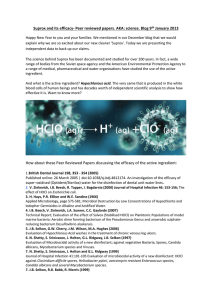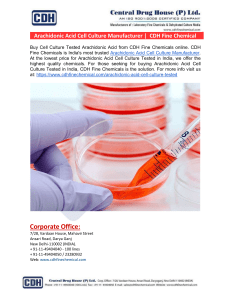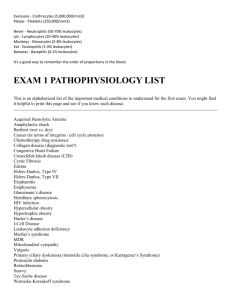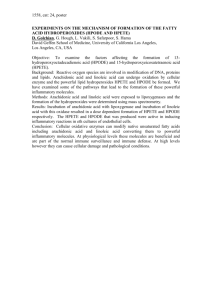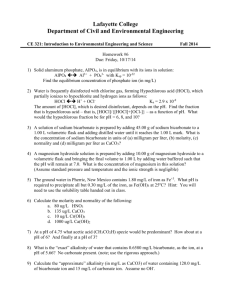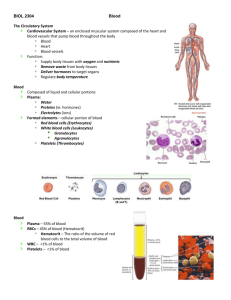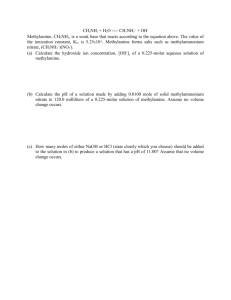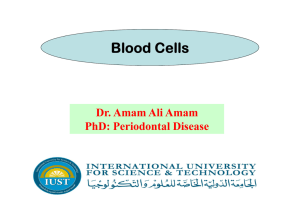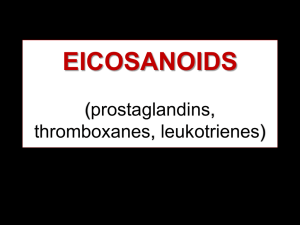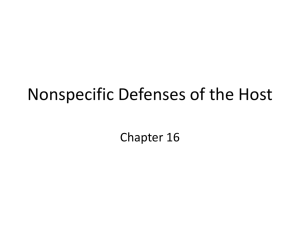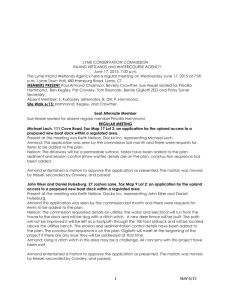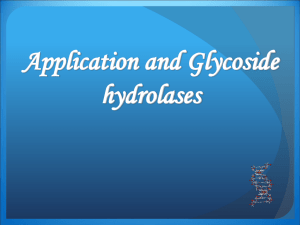slides on inflammation
advertisement
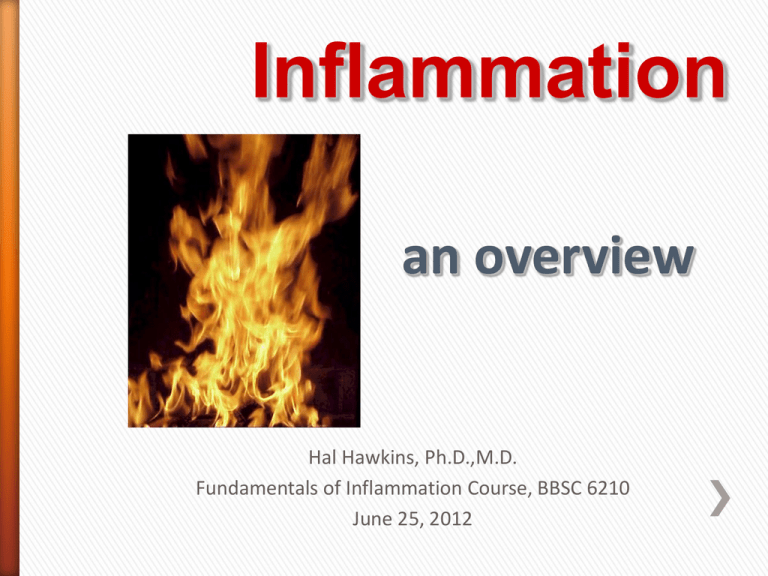
Inflammation an overview Hal Hawkins, Ph.D.,M.D. Fundamentals of Inflammation Course, BBSC 6210 June 25, 2012 Vasodilation and vascular leakage Cellular: recruitment activation functions tissue Injury » Tumor – edema due to plasma leakage » Rubor – dilation of arterioles and engorgement of microvasculature » Calor – increased local temperature » Dolor –probably due to stretching and prostaglandins MARGINATION ADHERENCE EMIGRATION AND CHEMOTAXIS The tongue of the frog provides an opportunity to see the microcirculation and the movements of neutrophils. OBSERVATIONS OF COHNHEIM (1882) “With the slowing of blood flow in the dilated venules leukocytes appear in the marginal stream and tend to stick to the vessel walls. At first the leukocytes stick momentarily and are then displaced to be washed away by the blood stream.“ “As they begin to adhere more closely some are pushed slowly along by the blood stream, becoming flattened and elongated in the direction of the flow so that they have the appearance of blobs of jelly being pushed along over a sticky surface.” more COHNHEIM: more COHNHEIM: “Gradually some of the cells adhere more firmly until even a relatively swift stream of plasma and red corpuscles cannot dislodge them. With an adequate injury some of the leukocytes sticking to the wall begin to make their way through it by active movements, taking 2 to 12 minutes to do so. “ Will this link work? http://www.youtube.com/watch?v=WEGGMaRX8f0 Armond Goldman’s discovery of neutrophil integrins Armond Goldman’s discovery of integrins » http://www.youtube.com/watch?v=9wxK6oLA5 oc And another one in color! » http://www.youtube.com/watch?v=DMvixApKz Ks And a third in diagram form (from Marchesi and Florey) » Receptors (complement, IgG, etc.) » PAF (platelet activating factor) » Phospholipase Inositol triphosphate Ca++ release Diacylglycerol Protein kinase C http://www.youtube.com/watch?v=ZUUfdP87Ssg » Complement fragment C5a » Bacterial formylated peptides » Arachidonic acid products, e.g. Leukotriene B4 » Cytokines called chemokines, e.g. IL-8 » PHAGOCYTOSIS » FUSION OF GRANULES » BACTERIAL KILLING » O2-, superoxide » » » » » H2O2, peroxide HOCl, hypochlorous acid OH•, hydroxyl radical Acid hydrolases (enzymes) Bactericidal proteins, defensins, lactoferrin, lysozyme Pneumonia » Plasma proteases, e.g. complement » Vasoactive amines, e.g. histamine » Platelet-activating factor PAF » Arachidonic acid metabolites, e.g. prostaglandin E3 » Reactive oxygen and nitrogen species » Cytokines and chemokines, e.g. IL-8 » Neuropeptides and endothelin » Products of arachidonic acid metabolism » Potent vasodilators/vasoconstrictors » Cyclo-oxygenase (COX), needed for prostaglandin synthesis, is inhibited by aspirin and selective COX2 inhibitors including the notorious Vioxx » Important in fever and pain » Lipoxygenase leads to leukotrienes, proinflammatory lipids active in asthma » O2-, superoxide » H2O2, peroxide » HOCl, hypochlorous acid » OH•, hydroxyl radical » ONOO-, peroxynitrite (all reactive oxygen and nitrogen species) » Lysosomal neutral hydrolases » Follows emigration and phagocytosis » Minimizes tissue injury » DELAY: ˃ GM-CSF G-CSF ˃ LPS, IL-1, IL-2 ˃ IFN-gamma » STIMULATE: ˃ IL-6 ˃ Phagocytosis ˃ Oxidative burst Neutrophil apoptosis is the key to prevention of tissue injury. » Cellular contents may not be released » Clearance by macrophages stimulates activation of macrophages to secrete factors favoring wound healing Recognition of Pathogen Activated Molecular Pathways (PAMPs) including Toll Like Receptors (TLRs) and Damage Activated Molecular Pathways (DAMPs) (together sometimes called Alarmins). TLRs stimulate release of multiple pro-inflammatory peptides. DAMPs lead to assembly of inflammasomes, activation of caspase-1, and production of IL-1beta.
